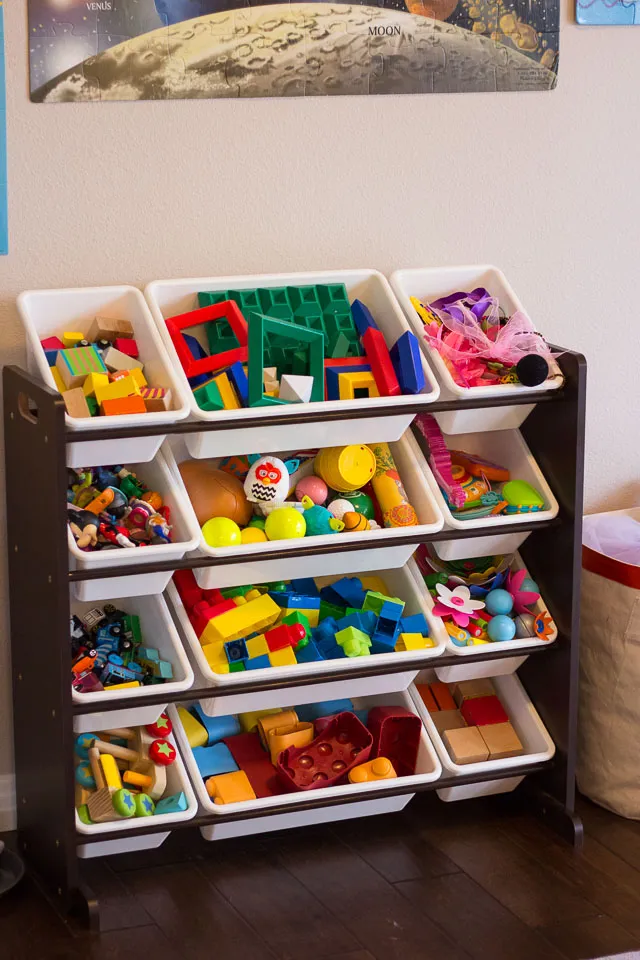
Organizing and Storing Toys
This page contains affiliate links for which we may be compensated
Last updated: December, 2025
Maintaining an organized and clutter-free environment is essential for both the well-being of your child and your own peace of mind. Among the various challenges parents face, managing and storing toys can often seem like an uphill battle. However, with a strategic approach and effective solutions, organizing and storing toys can become a manageable task that fosters a conducive living space for both children and adults.
Importance of Organizing and Storing Toys
The significance of organizing and storing toys extends beyond mere tidiness. A well-organized play area not only facilitates smoother daily routines but also promotes cognitive development and creativity in children. Moreover, it instills a sense of responsibility and discipline as children learn to care for their belongings and respect shared spaces.
Sorting and Categorizing
The first step in effective toy organization is sorting and categorizing. Begin by gathering all toys in one central location and systematically sorting them into categories based on type, size, and functionality. This process not only streamlines the organization process but also enables better utilization of storage solutions.
Purging and Decluttering
Once toys are categorized, it’s crucial to assess their relevance and condition. Discard broken or outdated toys and consider donating those that are no longer of interest to your child. Purging and decluttering not only create more space but also prevent overwhelming toy collections, promoting meaningful play experiences.
Choosing Suitable Storage Solutions
Selecting appropriate storage solutions is paramount to maintaining an organized play area. Consider factors such as accessibility, durability, and aesthetics when choosing storage containers and furniture. Opt for clear bins or baskets for easy visibility and labeled compartments to facilitate quick cleanup and encourage children to take ownership of their belongings.

Creating Designated Play Zones
Establishing designated play zones within your home helps delineate spaces for different activities and fosters a sense of order. Designate specific areas for active play, quiet activities, and arts and crafts, ensuring each zone is equipped with the necessary toys and supplies. This not only enhances organization but also promotes focused engagement and learning.
Rotating Toys
To prevent toy fatigue and maintain children’s interest, consider implementing a toy rotation system. Periodically rotate toys in and out of storage to keep play experiences fresh and exciting. This practice not only maximizes the use of available toys but also reduces clutter and encourages children to explore different play opportunities.
Involving Children in the Process
Empowering children to participate in the organization and storage of their toys instills valuable life skills and fosters a sense of responsibility. Encourage them to help with sorting, labeling, and tidying up, making the process a collaborative and enjoyable endeavor. Additionally, involve them in decision-making regarding toy purging and rotation, promoting autonomy and decision-making skills.
Maintenance and Consistency
Consistency is key to maintaining an organized play area over time. Establish daily cleanup routines and encourage children to tidy up after themselves after each play session. Regularly assess the effectiveness of your organization system and make adjustments as needed to accommodate evolving needs and preferences.
Conclusion
Organizing and storing toys is a fundamental aspect of creating a harmonious and functional living environment for both parents and children. By following strategic steps such as sorting, decluttering, and selecting suitable storage solutions, parents can effectively manage toy collections and promote a conducive play environment. Moreover, involving children in the process fosters valuable life skills and encourages a sense of ownership and responsibility. With dedication and consistency, maintaining an organized play area becomes a manageable task that enhances both practicality and enjoyment in family life.